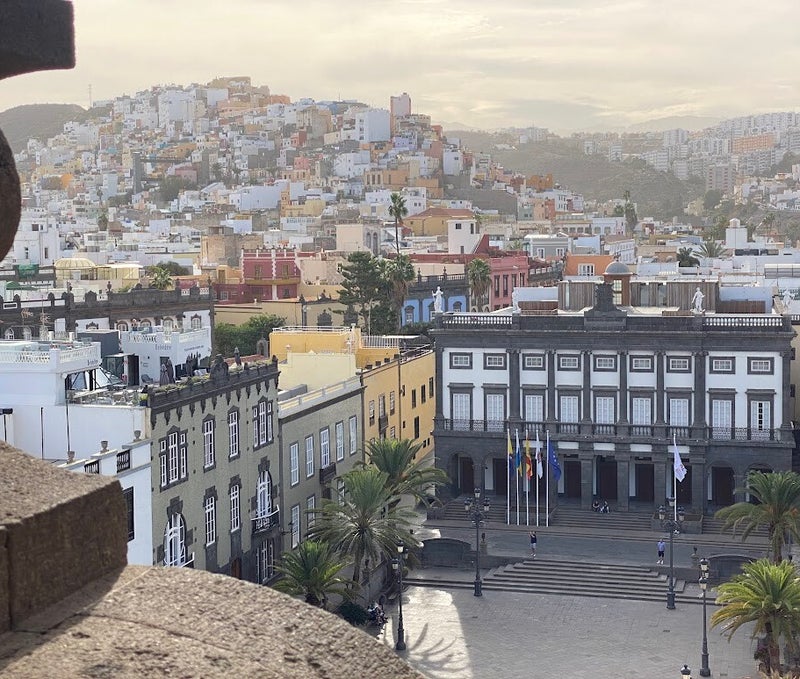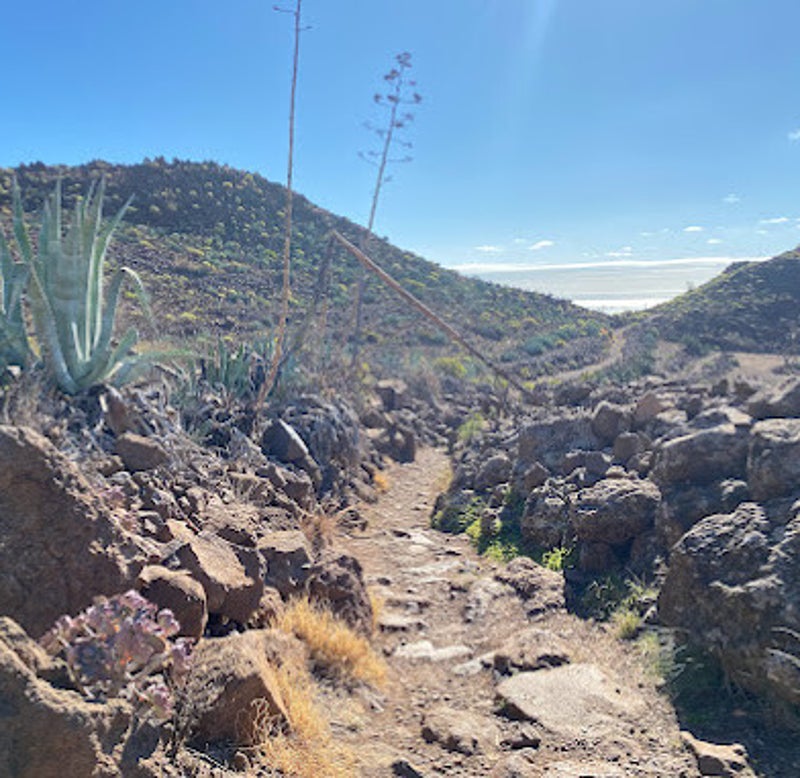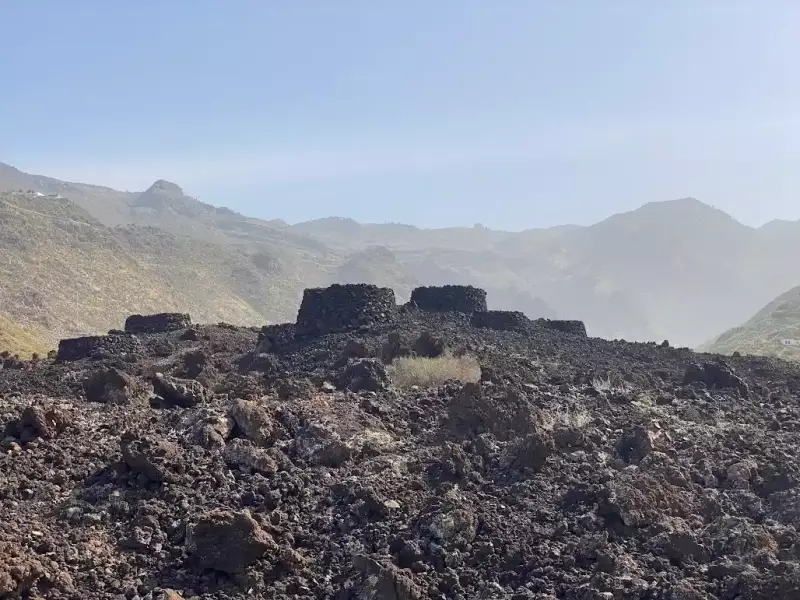Places not to miss in Gran Canaria
Many perceive the Canaries to be over developed and touristy. There is a busy (and also very sunny) stretch of up market all inclusive hotels in the south of the Gran Canaria which is where most package holidays will take you. (And I think any local discontent about tourism is focussed on this area). The rest of the island is very different - beautiful natural landscapes - quiet historic towns - cloud shrouded mountains - natural swimming pools and history and culture in abundance and I got a very warm welcome everywhere. I loved Gran Canaria so much that I spent nearly four weeks there documenting my travels.
Roads seem to be good but are not for the faint hearted - any country route will feature lots of hairpin bends. I got around using the guaguas (local buses) which are cheap, clean, efficient and friendly, and by foot (there is a good network of walking trails). It can take a bit of planning to get to some of the places in the interior but it is so worth it, and there is nearly always somewhere you can get a great coffee whilst you wait for the next bus. The locals are unfailing friendly and the weather is good for most of the time, but be aware that it can be very different as you travel around the island.
Most things are shut on Mondays.
Check out my blog for a few related travel stories.
And below there is a detailed list of the places that I loved visiting. Definitely perfect for solo travellers. And full of culture that will inspire anyone creative.
Vegueta – this is the old part of the capital city of Los Palmas. Not hard to find because the cathedral dominates it and all around are beautiful old houses and cobbled streets that you can wander around safely at any time. To get your bearings on arrival I would recommend that you climb the steps up the tower from the back of the cathedral. If you like archaeology, visit the Museo Canario in Vegueta (and there is a great little café round the corner called Café Del Real - in the street with the unforgettable name - Calle de Doctor Chil). The museum is well presented with good recorded explanations in English via QR code and a surprising gallery upstairs (won’t give it away!). If you do find it interesting it will link up with possible later visits to some archaeological parks (see below). There is also a fabulous modern art gallery Centro Atlantico de Arte Moderno which is spread over several floors and is free.




Castillo de la Luz – this is in the near the port of Las Palmas (kind of in the middle of suburbia) and close to Playa de las Canteras. It was amazing to see such a great beach in the middle of a lively city, and it’s a very popular tourist area with lots of restaurants and hotels. The Castillo dates back to 1478 and has undergone a surprising renovation! I would call it similar to the Brutalist style of architecture, which is a strange contrast to the old castle walls and so that would perhaps be interesting in itself: lots of concrete and iron against the ancient stones. But it is the home to an excellent sculpture gallery show-casing the work of Spanish artist Martin Chirino. So if modern sculpture is your bag you might enjoy it as much as I did. (Tip – you need to go to the ticket office to the left of what is clearly the entrance and pay first and leave any bags in the lockers down there.)



Jardin Canario and Caldera de Candema - you can do this as a day trip from Las Palmas on the bus, The guide books don't mention that access to the gardens (at least from the bus stop) is via one of several quite tricky and very steep paths down the cliff. But its well worth it. Another free attraction that is well maintained and really beautiful. As well as the botanical collections the place is full of birds and butterflies, and if you want to know what the noise around the pond is, its bull frogs! Then board the same bus and get off at the Caldera. Two nice restaurants right by the bus stop and an amazing sight of the volcanic crater tucked behind them. Another fairly tricky path (due to the scree) takes you all the way down into it, but you can opt to walk around the top of it instead (some parts of path being repaired when I visited) and/or head up the hill to the Mirador above. As you walk up the road there are great views of the crater and then as you round the corner, Las Palmas.


Puerto de las Nieves – this is a sleepy little fishing village in the north-west of the island. The biggest happening here is that its where the ferry to Tenerife comes and goes several times a day, and the occasional bus load of tourists come for an excellent fish lunch. But I don’t think I have ever seen such a beautiful bay dominated by the mountains. Its reminiscent of Greece with its handful of blue and white houses. The swimming is delightful with many different places you can enjoy the refreshing water and watch the fish with a snorkel or the crabs on the rocks. The natural pools (Salinas) are also very popular. A fabulous point for hiking up the mountains which are stunning. And the fresh fish is superb (and excellent value for money – Ragu seems the best restaurant and worth waiting for your meal – it’s often busy).

Barranco do Guayadeque – at the end of another very windy road up the mountains by the time you get here you will have seen the many cave dwellings carved into the mountainside. Many of these are still populated and were carved out by hand. If you take an organised tour like I did (and I highly recommend: Gran Canaria Excursions & Guided Tours | Trip Gran Canaria) you may get to look round the interior of one and meet a family whose home it is. At the end of the road is a restaurant with many carved out rooms, and even a little shop. The views are amazing, topped off for me with almond blossom (c February).



Aguimes and Ingenio - these are truly Spanish towns where you will meet few tourists but they both have lovely old historic centres that you can wonder around for hours. In Aguimes there is both an interpretation centre and a delightful little folk museum both of which I recommend. The first is inside the tourist office (well signposted) where there is also a great cafe for lunch immediately opposite. Ingenio is a just a couple of miles past Aguimes and the historic centre is at the top of the hill by the church which is hard to miss. Creatives may be particularly impressed by the bronze statues that you will find popping up in many spots in this delightful area. If you have time to check out Playa de Arinaga on the coast directly below Aguimes and Ingenio you will find a simple seaside town with good restaurants and a great promenade and delightfully, not a lot else!



Teror – this is like Vegueta but with the mountains as the backdrop. I arrived via two buses and another lovely trip up the winding roads through little villages and banana and fruit plantations. (And public transport is very cheap, efficient and friendly by the way, you can just download Global’s app and all you need is there.) Normally a little cooler as it is way up the mountains, it was 30 degrees when I was there at the end of January due to the presence of a calima. This is a hot sandy wind which apparently can be so bad you have to stay inside, but for me it just meant the presence of a bit of a haze for a few days. Head for the Basilica which is worth a visit and just wander round the streets. It was hard not to smile at the views – the tall trees, more lovely old balconied houses, plenty of cafes where you can sip something in the sunshine and then maybe head off on one of the trails. I walked a short way behind town and was soon in the countryside enjoying more magnificent views. Had coffee and a meat and chick pea stew for lunch in a tiny cafe on my back down into town which set me back just over 5 Euros. Tremendously friendly like just about everywhere else in Gran Canaria. (PS if you can stop at the little village of Firgas on the way up to Teror it’s a great coffee stop – look for the Mirador – yet more amazing views of the verdant valleys - and the tiled chairs running up the edge of the stepped fountain, which represent every one of the 17 states in Gran Canaria.)


Tejeda - takes a bit of planning to get here on public transport (or good driving skills by car!) but well worth it and if you come from Las Palmas you will pass through San Mateo, which has a great fruit and veg market. After an amazing climb up into the mountains you will arrive at this quiet little town, which has an air of Mexico about it, and is the best place for hiking around the fabulous rock formations of Roque Nublo and Roque Bentayga. When the cloud lifts the views are stunning. Be prepared for the weather to be completely different to that on the coast. A very peaceful place to stay for a while with some great restaurants and bakeries and a fabulous folk museum (left hand photo) that is not to be missed: Museo Tipico Canario Tres Cruces.


Barranco de las Vacas - this is like a mini grand canyon. Not that easy to find and maybe it should stay like that. If you want to spend a morning visiting this wonderful natural feature and some other hidden local caves, then I would suggest you do that via a tour with some very knowledgeable and entertaining local guides who run their own tour company sky-rebels.com - taking only 6 people at a time to see some very special places!



Archaeological parks – there are two I would recommend. The first is Malpes de Arriba just outside Agaete - which is the very Spanish town just up the hill from Puerto de las Nieves (where there is also a cute little botantical garden you may want to pop into). Its an ancient burial site which is on a lava flow, so probably the worst material on which to build. Its beautifully and thoughtfully presented and I found it very moving. Like most places in this area, it is surrounded by the mountains and the local flora and fauna (well, you’d be unlucky not to spot a few of the native lizards here). The second is the Cueva Pintada at Galdar. The painted cave itself is small and protected by glass, but it’s another thoughtful presentation of pre-colonial life on the island. The excavations are in the middle of the town so you have them, the modern architectural structure put over them with walkways similar to those at Malpes, and then contemporary apartments all around that you can see through the canvas type sides of the museum’s structure. Normal life with dogs barking and locals chatting carries on around...



Puerto de Mogan – It is very busy but perhaps one of the prettier parts of the overdeveloped south, which has a nice atmosphere and is great for people watching. Climb up the steps to the mirador and there’s a good view of the harbour. Close by is the natural and ever-changing dunes of Maspalomas which are interesting, but declining, as the rules to stick to the paths seem not to be enforced at all, which is a great shame. If you have never seen dunes you should go, if you have enjoyed them elsewhere, you may be a little disappointed.
La Aldea de San Nicholas and Sioux City– this is my wild (west!) card really. If you are getting about by public transport you can take the bus here from Puerto de las Nieves or Puerto de Mogan. The drive along the coast road from the former is at times traumatic, with too many hairpin bends to count and some vertiginous drops. The bus drivers seem to navigate it with ease and blare their horns before the corners as there is only just enough room for one bus, let alone two! Actually just doing the bus ride would be enough entertainment for one day… but you arrive at La Aldea (having driven the last few miles through what seems like a sea of plastic under which bananas, tomatoes et al are thriving) and you are in for another treat. It is a quiet town that honestly looks like the set of a spaghetti western. The buildings are mainly flat roofed with the frontages you will remember from those old movies and with a mountain backdrop and cactus everywhere, you really expect a cowboy on horseback to saunter along at any minute. There are some walking trails, a few folk museums (unfortunately closed) and apparently a nearby pine forest to explore. I didn’t find the latter or the tourist office so I hopped back on the bus and made sure I sat on the correct side to enjoy the view on the way home. Some time after my trip here I managed to find and visit Sioux City which is a theme park near Maspalomas based in an old film set. It really is a fun, interactive day out that I would recommend to all.

